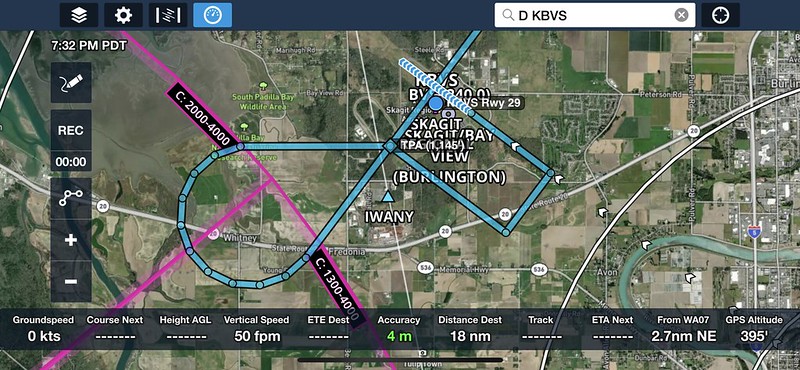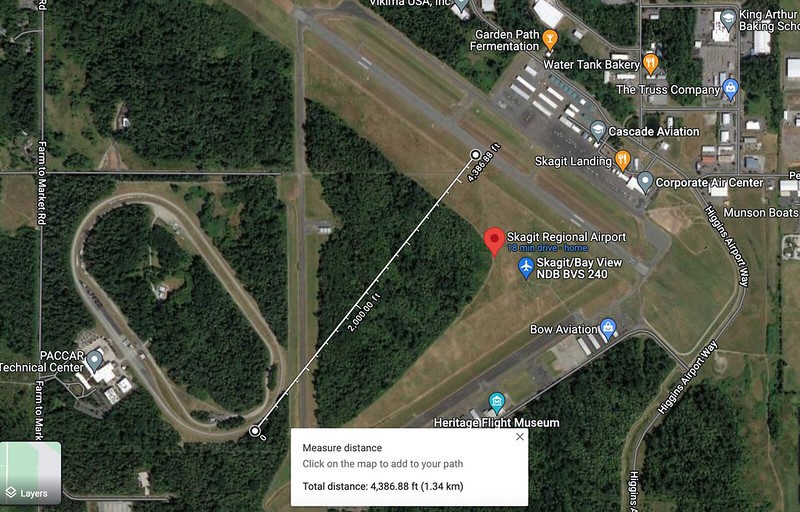Palmpilot
Touchdown! Greaser!
I could be mistaken about what BradW was referring to.But it doesn’t say “outside the pattern”, which, being in quotes I would assume came verbatim from somewhere.
I could be mistaken about what BradW was referring to.But it doesn’t say “outside the pattern”, which, being in quotes I would assume came verbatim from somewhere.
Well, as I told a former General Manager, “You know what happens when you assume…you look like a ****ing idiot.”I could be mistaken about what BradW was referring to.
I was using quotes.... meaning air quotes I suppose.... in a casual conversational way. Not in an English class kind of way. Knowing that outside is a very subjective and fuzzy concept that a lot of folks here seem to have very strong and very different definitions. Not quoting any specified source.
And if you fly two miles beyond the traffic pattern, as the recommendation states, you’ll be even further away from the runway.If you fly 2 miles beyond the runway BEFORE you begin your descent to pattern altitude, then make that big turn to intercept the 45, in most typical light GA airplanes, you'll be at least 2.5 -3 miles away from the runway by the time you intercept the proper 45 entry and roll wings level. If there's somebody at pattern altitude that claims to be on downwind that far out, they seriously need to reconsider flying as a desirable activity.
Until you goober up the pattern for everyone else.I do standard rate turns in the pattern. I am simply responding to the sorts of accidents I see. I also fly a faster, more complex aircraft, and might do things differently were I in a Skyhawk. You do you, I'll do me. No need for snark.


Something doesn't look right. Where's the straight descending segment (after the 2-mile point) before beginning the right turn and why is that turn radius so wide compared to instant changes in heading onto and off the base leg?Here's what I've found:
<snip>
Could you say a little more about why you asked the question, and to what uses the answer could be put?
A better explanation would be that if you lose the engine, being skilled at flying a precise, tight pattern increases your chances of making an off-field landing where you planned it because you’re used to flying the pattern inside glide range.

"The pattern" is a dynamic concept so there can't be an "official" consideration. The pattern is often changing dimensions to accommodate faster aircraft and in some cases to handle slower aircraft efficiently. It has to handle other issues, too, such as when someone extends downwind but continues the approach to land. Assuming that they are following an aircraft on final, that's where the pattern is at that moment.so then, can we officially consider 2 miles beyond downwind to be "outside the pattern"?
I don't look at it as the least likely time
and any moment in the entire flight isn't there a chance that the engine will keep running and a chance that it will quit?
Instead, I look at it as a time when I'm lower and have fewer options IF it quits.
For example, the pattern is also a high traffic area, so I think it is justifiable to fly beyond gliding distance of the runway when it's necessary to mitigate collision risks.
I do standard rate turns in the pattern. I am simply responding to the sorts of accidents I see. I also fly a faster, more complex aircraft, and might do things differently were I in a Skyhawk. You do you, I'll do me. No need for snark.
"Dragging it in" has always been considered poor form by the instructors I've flown with. And in an urban area, it's not nice for the neighbors.Of course. I think the idea is to adjust speed and maneuver so as to remain as much within gliding distance of the runway as practicable. Even if you can’t make the runway, just making to the airport environs will often provide pretty hospitable open spaces to put down on.
What I sometimes see is a pilot being dragged way wide and yet still descending on cue, often passing through 500’ while still miles from the runway. That’s what one should avoid, as you say to mitigate risk if something were to go wrong.
The only way that'll happen is if the others are crap pilots.Until you goober up the pattern for everyone else.
Is “short final” a distance or time?
